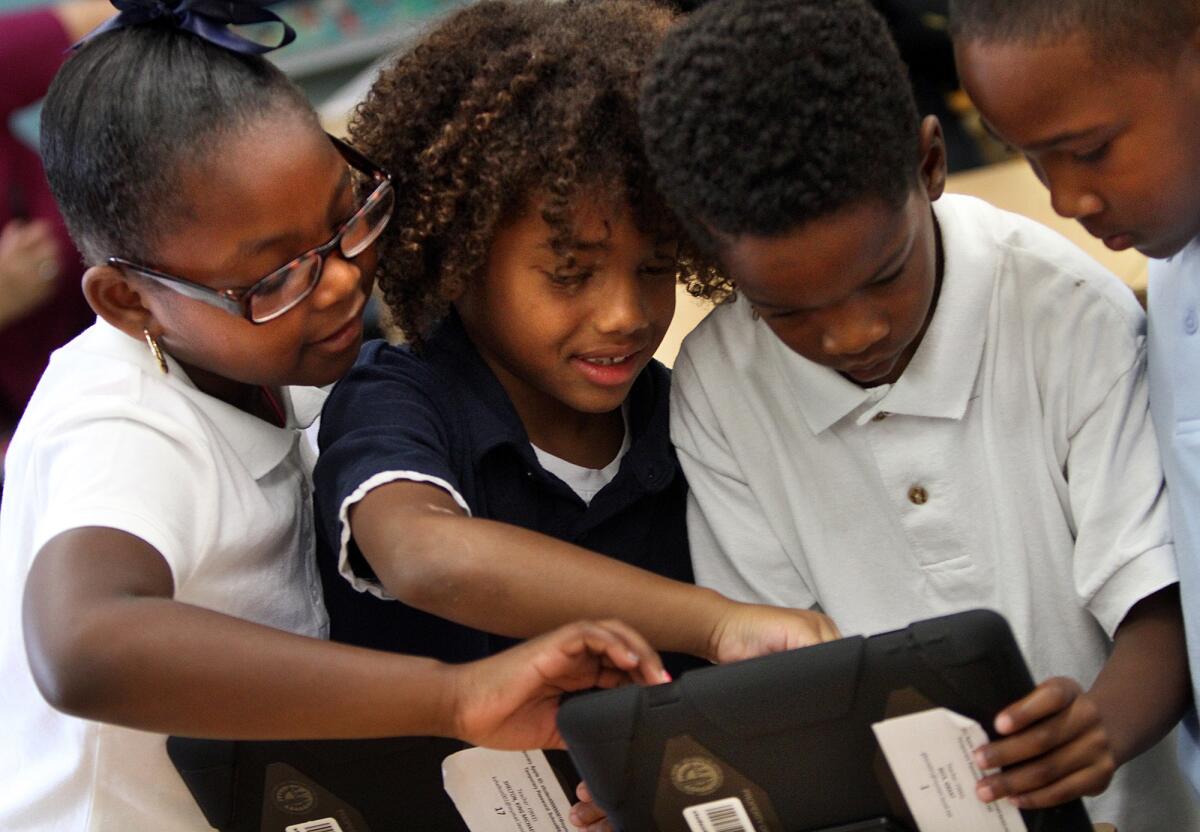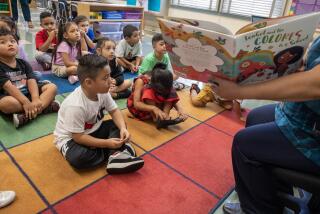New report on L.A. Unified’s iPads reflects problems with curriculum

- Share via
An evaluation of the iPads-for-all project in Los Angeles schools found that only 1 of 245 classrooms surveyed even used the costly curriculum.
The analysis, conducted by an outside firm, also highlighted other problems, including the pace of the rollout last year at 47 schools in the Los Angeles Unified School District. It found that district staff was so focused on distributing devices that little attention could be paid to using iPads effectively in the classroom.
The early goal “was to just get the devices out, that was basically it, just get the devices out, use them as quick as possible ... there were other goals … they were talked about but they really didn’t get implemented,” the report quoted one technical specialist as saying.
A “district leader” commented: “We didn’t have enough people so everyone was working on deployment ... that really, really impacted our professional development rollout, in fact we barely had one because of that.”
The review, conducted by a nine-member team from Washington firm American Institutes for Research, offers a sharp contrast to early pronouncements from the school district on the $1.3-billion effort. In particular, L.A. schools Supt. John Deasy labeled the project “an astonishing success” and officials faulted media reports for suggesting otherwise.
Last month, Deasy suspended new purchases under the iPad contract and relaunched bidding. His close ties to Apple, the device maker, and Pearson, which provided the curriculum on the iPad, are under scrutiny by the school system’s inspector general. Deasy has denied any impropriety, emphasizing that he recused himself from the bidding because he owned Apple stock.
All told, the nation’s second-largest school system has purchased 109,000 iPads so far; 62,000 contain the Pearson curriculum. It was left off devices purchased late last year for use in state standardized testing. To date, the district has spent $61 million on the iPads, including carts to charge them.
On Wednesday, the district response came from Bernadette Lucas, director of the district’s technology project.
“We welcome the constructive input,” Lucas said in a release. “We had a vision to have a device in the hands of every LAUSD student to close the digital divide. This is still our vision. All of our students -- not some, but all -- should have the same access to the learning tools they need to achieve in the 21st century.”
Twitter: @howardblume
More to Read
Sign up for Essential California
The most important California stories and recommendations in your inbox every morning.
You may occasionally receive promotional content from the Los Angeles Times.











